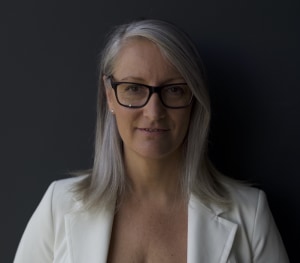
With a mission to close the gap between strategy and the creative execution, Anne Miles MD of International Creative Services hosted a research project to determine how the creative industries can produce more effective work, more consistently. This is the third in a series outlining the outcomes of this project. This week Miles discusses how we need to get on the same team through the entire creative process beginning with research.
The advertising and marketing industry is full of passionate people who are highly experienced and capable at their specific job roles, but often lose sight of the reason that we’re all here - to make the most effective work possible (not just for the individual communication piece at hand but for the brand across the board).
During the research project it was evident that there was a real ‘them versus us’ attitude from the creatives (to the point of vitriolic at times), particularly between the creatives and researchers but also between creatives and clients, and even suppliers.
This separation is not just in attitude and mindset but also in process because of the workflow and business infrastructures that segregates the team and suppliers.
The silo effect across the business units is impacting communication and also the vertical separation by authority in the client and agency teams, yet seem a fundamental necessity particularly with larger scale brands and their agencies that support them. With marketers working with multiple suppliers for specialised skill-sets the silo effect goes beyond the individual businesses. There is a need to work differently in order to allow better collaboration and without vested interests impacting recommendations and decisions.
Miles feels there is potential for independent strategists and consultants in the industry to work on behalf of brands to come up with media neutral solutions, or for clients to be more empowered by taking such leading roles in-house, and for other parties to be focused purely on delivery in order to remove bias and brands being sold solutions with a hidden vested interest.
Agencies that are full service are more likely to offer media neutral solutions, but still have vested interests in recommendations (eg. available resources, profitability that may be better in some departments over others, or they have a need to expand on their folio in certain areas, and sometimes it is a matter of the first available idea within the deadline that takes priority... and so on).
Collaboration and communication are needed here and coupled with reality check processes in place to ensure all parties are genuinely thinking about the customer and the brand at all times and not self-serving.
Often the people actually producing the work often can clearly see when creative is going off track, but are not given the opportunity or the voice to be heard. Simply because of the silo effect, only certain people in certain roles can have input in certain tasks. Miles proposes that some smart people have a lot to contribute but the current protocols don’t allow it; and perhaps even our industry’s gender and ageism issues are also impacting this.
Miles believes it is time for creatives to put down their sword when it comes to research and to work closely with clients to get the results they actually need, together.
Key actions
• Involve creatives in the research and strategic process - including collaboration on methodology
• All parties to be aligned and working for the same objectives - clearly define and communicate them
• Consider new workflows that allow key team members to be involved earlier
• Share research insights with all team members including key suppliers (we’ve said this before but it is worth saying again, and again)
• Consider new structures and independent advisory where objective and media- neutral solutions flourish
• Educate widely on each other’s roles
• Encourage and allow project managers and suppliers to have a voice if it is supported by strategy
By International Creative Services MD Anne Miles.


